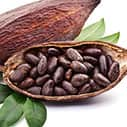
What's Hot
What's Hot
News flashes are posted here frequently to keep you up-to-date with the latest advances in health and longevity. We have an unparalleled track record of breaking stories about life extension advances.
Mediterranean diet lowers kidney disease risk
 October 30 2014. A study scheduled for publication in the Clinical Journal of the American Society of Nephrology has found that consuming a Mediterranean-style diet is associated with a lower risk of chronic kidney disease, a progressive disease affecting over 20 million adults in the US. The diet is characterized by a high intake of vegetables, fruit, legumes, fish and healthy fats, and lower amounts of red meat, processed foods and sugar.
October 30 2014. A study scheduled for publication in the Clinical Journal of the American Society of Nephrology has found that consuming a Mediterranean-style diet is associated with a lower risk of chronic kidney disease, a progressive disease affecting over 20 million adults in the US. The diet is characterized by a high intake of vegetables, fruit, legumes, fish and healthy fats, and lower amounts of red meat, processed foods and sugar.
"Many studies have found a favorable association between the Mediterranean diet and a variety of health outcomes, including those related to cardiovascular disease, Alzheimer's disease, diabetes, and cancer, among others," noted lead researcher Minesh Khatri, MD, of Columbia University Medical Center. "There is increasing evidence that poor diet is associated with kidney disease, but it is unknown whether the benefits of a Mediterranean diet could extend to kidney health as well."
For the current study, Dr Khatri and colleagues analyzed data from a group of 900 men and women followed for nearly seven years. Dietary information was scored for Mediterranean diet adherence.
The researchers determined that for each one point increase in Mediterranean diet score there was a 17% reduction in the risk of developing chronic kidney disease. For those whose scores of 5 or higher were indicative of the closest adherence to the diet, a 50% lower risk of developing the disease and a 42% lower risk of rapid kidney function decline were observed.
"Although a seemingly simple goal, achieving this is challenging,” wrote Julie Lin, MD, MPH, FASN, of Brigham and Women's Hospital in an accompanying editorial. “We need to begin by embracing the reality that there is no magic pill or miracle food, only vigilance and discipline with diet and regular exercise, and the rare indulgence in cake for very special occasions."
—D Dye
Flavanols improve memory in study of older individuals
 October 27 2014. A study described on October 26, 2014 in Nature Neuroscience revealed improvement in an area of the brain that undergoes changes associated with age-related memory loss, among subjects given a high amount of cocoa flavanols. Flavanols are compounds that naturally occur in cocoa beans, tea and other plants, which have been associated with several health benefits, including a lower risk of diabetes.
October 27 2014. A study described on October 26, 2014 in Nature Neuroscience revealed improvement in an area of the brain that undergoes changes associated with age-related memory loss, among subjects given a high amount of cocoa flavanols. Flavanols are compounds that naturally occur in cocoa beans, tea and other plants, which have been associated with several health benefits, including a lower risk of diabetes.
For the current study, 37 participants aged 50 to 69 were given a cocoa beverage that provided 900 mg or 10 mg flavonols per day for three months. Neuropsychological tests of memory function specifically localized to the brain’s dentate gyrus and dentate gyrus blood volume imaging were conducted before and after treatment.
"When we imaged our research subjects' brains, we found noticeable improvements in the function of the dentate gyrus in those who consumed the high-cocoa-flavanol drink," reported lead author Adam M. Brickman, PhD, of the Taub Institute for Research on Alzheimer's Disease and the Aging Brain at Columbia University.
Significant improvements in memory also occurred among those who received the high flavonol beverage. "If a participant had the memory of a typical 60-year-old at the beginning of the study, after three months that person on average had the memory of a typical 30- or 40-year-old," observed senior author Scott A. Small, MD.
Although previous work conducted by the laboratory of Dr Small had uncovered an association between dentate gyrus changes and age-related memory loss, it had not been known whether these alterations actually caused the condition. The study is the first to provide direct evidence that one aspect of human age-related memory decline is caused by changes in a specific region of the brain and can be improved by a dietary intervention. Dr Small’s team plans to conduct a larger study to replicate these preliminary findings.
—D Dye
Majority of Americans short on critical nutrients
 October 24 2014. A study reported online on September 19, 2014 in the Journal of Human Nutrition and Dietetics reveals widespread failure among most U.S. adults to obtain sufficient amounts of important nutrients in their diets.
October 24 2014. A study reported online on September 19, 2014 in the Journal of Human Nutrition and Dietetics reveals widespread failure among most U.S. adults to obtain sufficient amounts of important nutrients in their diets.
Ruopeng An of the University of Illinois at Urbana-Champaign and his colleagues evaluated data from 11,811 men and women enrolled in the National Health and Nutrition Examination surveys 2007-2008 and 2009-2010. Over 4,200 subjects qualified as disabled. Twenty-four hour dietary recall questionnaire responses were analyzed for nutrient in intake from food and supplements.
"We conducted statistical analyses to compare people with and without disabilities in terms of nutrient intake,” reported Dr An. "We found that American people consume much lower amounts of nutrients than are recommended. For example, only 11.3 percent of people meet the daily recommended intake of fiber. Only 4.7 percent of adults consume recommended amounts of potassium."
Dietary supplement use was associated with improvement in vitamin C and D, and calcium intake. Among men and women with disabilities, the likeliness of meeting dietary guideline recommendations was significantly less than that of nondisabled subjects for fiber, vitamin A, vitamin C, calcium and potassium.
"In general, people with disabilities are also disadvantaged nutritionally compared with people without disabilities, even though the bar is already so low," Dr An observed. "Physically, financially and mentally, they have different barriers to accessing healthy food."
"Policymakers and activists for the disabled traditionally have focused primarily on improving transportation options and the physical accessibility of buildings, roads, paths and parking lots," he remarked. "Now it's time for them to turn their attention to the nutritional challenges that confront people with disabilities."
—D Dye
Walnuts’ antioxidant and ALA content could confer brain benefit in Alzheimer’s disease
 October 22 2014. An article by Abha Chauhan, PhD, and associates that appeared in the Journal of Alzheimer’s Disease reports a benefit for walnuts in an Alzheimer’s disease mouse model.
October 22 2014. An article by Abha Chauhan, PhD, and associates that appeared in the Journal of Alzheimer’s Disease reports a benefit for walnuts in an Alzheimer’s disease mouse model.
Acting on the finding of in vitro research that uncovered a protective effect for the nuts against amyloid-beta induced oxidative damage, Dr Chauhan’s team fed four month old transgenic mice diets containing 6% or 9% walnuts, which is the equivalent of 1 or 1.5 ounces of walnuts per day in humans. Control groups consisting of transgenic or normal mice were provided with walnut-free diets. Between the ages of 13 and 14 months, the animals were tested for spatial memory and learning ability, position discrimination learning ability, psychomotor coordination and anxiety-related behavior.
Alzheimer’s disease mice on the control diet exhibited increased memory deficit and anxiety-related behavior, and impairments in spatial learning ability, position discrimination learning ability and motor coordination in comparison with normal mice on the same diet. However, animals that received walnuts showed improvements in memory, learning, anxiety and motor development compared to the transgenic controls. In light of the significant amount of oxidative stress and inflammation present in Alzheimer’s disease, the researchers suggest that the high antioxidant content of the nuts plus their omega-3 fatty acid content could be responsible for the benefits observed.
"These findings are very promising and help lay the groundwork for future human studies on walnuts and Alzheimer's disease – a disease for which there is no known cure," commented Dr Chauhan, who is head of the Developmental Neuroscience Laboratory at the New York State Institute for Basic Research in Developmental Disabilities. "Our study adds to the growing body of research that demonstrates the protective effects of walnuts on cognitive functioning."
—D Dye
Resveratrol shows bone benefit
 October 20 2014. An online study in the Journal of Clinical Endocrinology & Metabolism reveals an improvement in spinal bone density in association with resveratrol supplementation in a randomized trial of middle-aged men with metabolic syndrome: a group of risk factors including abdominal obesity, elevated triglycerides, high blood pressure, high fasting blood glucose and low high-density lipoprotein (HDL), cholesterol levels, that are associated with an increased risk of cardiovascular disease and diabetes.
October 20 2014. An online study in the Journal of Clinical Endocrinology & Metabolism reveals an improvement in spinal bone density in association with resveratrol supplementation in a randomized trial of middle-aged men with metabolic syndrome: a group of risk factors including abdominal obesity, elevated triglycerides, high blood pressure, high fasting blood glucose and low high-density lipoprotein (HDL), cholesterol levels, that are associated with an increased risk of cardiovascular disease and diabetes.
"Our study is the first to reveal resveratrol's potential as an anti-osteoporosis drug in humans," announced lead author Marie Juul Ørnstrup, MD, of Aarhus University Hospital in Denmark. "Our findings suggest the compound stimulates bone-forming cells within the body."
Sixty-six obese men received 500 milligrams (mg) resveratrol, 75 mg resveratrol or a placebo two times per day for sixteen weeks. Bone mineral density, geometry and microstructure were assessed before treatment and at the study’s conclusion. Bone alkaline phosphatase and other blood markers of bone formation were measured at baseline and at weeks 4, 8 and 16.
Participants who received 1,000 mg resveratrol per day experienced a 2.6% increase in lumbar spine volumetric bone mineral density at the end of the study and an average 16% increase in bone alkaline phosphatase in comparison with the placebo group at all time points measured. "In just four months on high-dose resveratrol, we saw significant improvements in bone mineral density at the spine and elevated levels of the bone formation marker BAP," Dr Ørnstrup observed. "These are encouraging results. Additional research is needed to assess whether these bone protective effects occur in populations at risk of osteoporosis during the course of long-term treatment."
—D Dye
Low testosterone a heartbreaker for diabetic men
 October 17 2014. A report published online on October 14, 2014 in the Journal of Clinical Endocrinology & Metabolism unveiled a link in men with type 2 diabetes between reduced levels of the hormone testosterone and a greater risk of atherosclerosis, a condition that increases the likelihood of heart attack.
October 17 2014. A report published online on October 14, 2014 in the Journal of Clinical Endocrinology & Metabolism unveiled a link in men with type 2 diabetes between reduced levels of the hormone testosterone and a greater risk of atherosclerosis, a condition that increases the likelihood of heart attack.
In a cross-sectional prospective study, Javier Mauricio Farias, MD, of the Hospital Universitario Sanatorio Guemes in Buenos Aires and his associates evaluated carotid artery intima media thickness, atherosclerotic plaque formation, endothelial cell function, markers of inflammation and plasma testosterone levels in 155 type 2 diabetic men with no history of cardiovascular disease. Over half of the men, who were younger than 70 years of age, had low testosterone.
The team uncovered an association between low testosterone levels and several indicators of atherosclerosis. Diabetic men with diminished testosterone levels were approximately six times likelier to have increased carotid artery intima media thickening and endothelial dysfunction in comparison with men whose testosterone levels were normal. Fifty-four percent of the participants with low testosterone were considered to be at risk of cardiovascular disease, compared to just 10% of those with normal levels.
"Our study indicates a strong association between low testosterone concentration and the severity of atherosclerotic plaques as well as other key atherosclerotic markers in middle-aged men with type 2 diabetes," commented Dr Farias. "The results of our study advance our understanding of the interplay between low testosterone and cardiovascular disease in patients with diabetes."
"We still need to determine whether testosterone is directly involved in the development of atherosclerosis or if it is merely an indicator of advanced disease," he added. "This study is a stepping stone to better understanding the risks of cardiovascular events in men who have both low testosterone and type 2 diabetes."
—D Dye
Higher vitamin E intake linked with lower blood pressure
 October 15 2014. The Journal of Nutritional Science and Vitaminology published an article on October 9 that reveals an association between higher vitamin E intake and a lower risk of hypertension.
October 15 2014. The Journal of Nutritional Science and Vitaminology published an article on October 9 that reveals an association between higher vitamin E intake and a lower risk of hypertension.
“Oxidative damage and free radical production in the endothelium are closely involved in the pathogenesis of the atherosclerotic process which leads to cardiovascular disease,” explain authors Akiko Kuwabara of Osaka Shoin Women’s University and colleagues. “Since vitamin E is a fat-soluble vitamin with potent antioxidative activity and one of its main physiological roles is considered to be the inhibition of unsaturated fatty acid oxidation, vitamin E is a promising candidate against oxidative stress-induced unfavorable consequences.”
Dr Kuwabara and associates evaluated data from 1,405 men and 2,102 women aged 40 and older who participated in Japan’s National Health and Nutrition Survey 2007. Dietary records were analyzed for the intake of vitamin E and other nutrients. The presence of hypertension was defined as systolic blood pressure of 140 mmHg or higher, diastolic blood pressure of 90 mmHg or higher, or use of an antihypertensive drug.
Among participants whose vitamin E intake was among the top one-third of subjects, there was a 27% lower risk of hypertension, and for those among the middle third, the risk was 19% lower. Adjustment for increased intake of other blood-pressure-lowering nutrients failed to significantly affect the results.
In their discussion of the findings, Dr Kuwabara and colleagues remark that studies involving spontaneously hypertensive rats have uncovered enhanced reactive oxygen production, leading to nitric oxide inactivation and impaired inhibition of epinephrine-induced vasoconstriction. Vitamin E, being an antioxidant, decreases the formation of free radicals, thereby helping to reduce this process.
In addition to commonly recognized behavioral risk factors for noncommunicable diseases (NCDs), the authors suggest that antioxidative vitamins be considered for NCD prevention.
—D Dye
High dose vitamin D improves immune markers in HIV-infected children and young adults
 October 13 2014. An article published ahead of print this year in The Pediatric Infectious Disease Journal affirms the safety and efficacy of high dose of vitamin D3 in young adults and children with HIV. “This was the first randomized, clinical trial evaluating the long term safety and efficacy of daily high-dose vitamin D3 in HIV-infected children and young adults,” authors Virginia A. Stallings, MD, and colleagues announce.
October 13 2014. An article published ahead of print this year in The Pediatric Infectious Disease Journal affirms the safety and efficacy of high dose of vitamin D3 in young adults and children with HIV. “This was the first randomized, clinical trial evaluating the long term safety and efficacy of daily high-dose vitamin D3 in HIV-infected children and young adults,” authors Virginia A. Stallings, MD, and colleagues announce.
The trial enrolled 58 HIV-positive participants ranging in age from 9.6 to 24.9 years. Seventy-six percent of the subjects were receiving highly active antiretroviral therapy (HAART). Participants were randomized to receive 7,000 international units (IU) vitamin D3 or a placebo daily for one year. Blood samples collected at the beginning of the study and at three, six and twelve months were analyzed for 25-hydroxyvitamin D, safety factors, immune markers and other factors.
Among subjects receiving HAART, 25-hydroxyvitamin D levels were higher after treatment in comparison with placebo and baseline levels. Naïve T helper cells and CD4 T helper cells increased among HAART-treated participants, and viral load was lowered. “Mechanisms for differential response to vitamin D3 supplementation by HAART status are unknown, may include adherence to treatment and require further study,” the authors note.
Laboratory values related to safety, including serum calcium and 25-hydroxyvitamin D levels, indicated a lack of serious events in association with vitamin D treatment. “Twelve month, high-dose vitamin D3 supplementation in children and young adults with HIV was safe and resulted in a significant increase in 25(OH)D in subjects on HAART,” Dr Stallings and her associates conclude. “This increase was accompanied by small improvement in several markers of HIV immune status.”
“Large scale studies are needed to confirm the potential immunologic and virologic benefits of high-dose vitamin D3 supplementation.”
—D Dye
Reduced B vitamins predict increased adiposity in children
 October 10 2014. A study described online on October 8, 2014 in the Journal of Nutrition found an association between reductions in several B vitamins and an increase in body mass index and other indicators of adiposity in children between the ages of eight and fifteen.
October 10 2014. A study described online on October 8, 2014 in the Journal of Nutrition found an association between reductions in several B vitamins and an increase in body mass index and other indicators of adiposity in children between the ages of eight and fifteen.
Researchers at the University of Queensland in Herston, Australia evaluated data from 1,131 Mexican-American children who participated in the National Health and Nutrition Examination Survey (NHANES) 2001-2004. Blood samples were analyzed for serum vitamin B12 and folate levels, and dietary questionnaire responses provided information concerning B vitamin intake. Dual-energy x-ray absorptiometry (DXA) scans assessed trunk fat mass and total body fat mass.
Body mass index (BMI), trunk fat mass and total body fat mass were all found to increase with age. Children whose weight was normal had higher average serum vitamin B12 levels compared to those who were overweight or obese. Greater vitamin B12 and folate levels were associated with lower BMI and total body fat mass. When B vitamin dietary intake was examined, consuming more thiamine, riboflavin and folate were associated with a lower body mass index.
In their discussion, authors Inong R. Gunanti and colleagues observed that B vitamins are required for the metabolism of carbohydrates and fat, and improve lipid and lipoprotein metabolism. The vitamins are also involved in the maintenance of mitochondria, which are involved in energy metabolism. They note that supplementation with folic acid has been reported to increase the expression and activity of protein receptors associated with reduced obesity and metabolic disorders in animals and humans.
"These results, if further confirmed, could have important implications for the development of interventions that more effectively reduce childhood and adolescent obesity in populations such as Mexican-American children who may be at a greater risk of obesity," they conclude.
—D Dye
Vitamin D supplementation helpful for childhood atopic dermatitis
 October 9 2014. The October 2014 issue of the Journal of Allergy and Clinical Immunology reports the results of a trial of children with winter-related atopic dermatitis which found a benefit for vitamin D supplementation in alleviating the condition.
October 9 2014. The October 2014 issue of the Journal of Allergy and Clinical Immunology reports the results of a trial of children with winter-related atopic dermatitis which found a benefit for vitamin D supplementation in alleviating the condition.
Acting on the positive findings of a preliminary investigation conducted in Boston, Carlos Camargo Jr, MD, DrPH, of Massachusetts General Hospital’s Department of Emergency Medicine and colleagues conducted a randomized, double-blinded trial of 107 Mongolian children with atopic dermatitis: a chronic, inflammatory skin disease that is a form of eczema. Those enrolled in the current study experienced worsening of their symptoms during the autumn to winter transition or in cold weather. The subjects were divided to receive 1,000 international units (IU) vitamin D in liquid form or a placebo daily for one month.
At the end of the treatment period, vitamin D supplementation was associated with an improvement in the Eczema Area and Severity Index (EASI) and Investigator’s Global Assessment in comparison with the placebo group. EASI scores improved by an average of 29% in the supplemented group in comparison with 16% in the placebo group.
"While we don't know the exact proportion of patients with atopic dermatitis whose symptoms worsen in the winter, the problem is common," commented Dr Camargo, who is a professor of Medicine at Harvard Medical School. "In this large group of patients, who probably had low levels of vitamin D, taking daily vitamin D supplements – which are inexpensive, safe and widely available – proved to be quite helpful."
—D Dye
Melatonin improves mitochondrial function in rat model of diabetes
 October 6 2014. The August, 2014 issue of the Journal of Pineal Research published an article by researchers at the University of Granada, La Paz University Hospital and the University of Texas, that reported a protective effect for melatonin on mitochondrial function in obese rats.
October 6 2014. The August, 2014 issue of the Journal of Pineal Research published an article by researchers at the University of Granada, La Paz University Hospital and the University of Texas, that reported a protective effect for melatonin on mitochondrial function in obese rats.
“Mitochondrial dysfunction in adipose tissue may contribute to obesity-related metabolic derangements such as type 2 diabetes mellitus,” write principle investigator Ahmad Agil and colleagues. “Because mitochondria are a target for melatonin action, the goal of this study was to investigate the effects of melatonin on mitochondrial function in white and beige inguinal adipose tissue of Zücker diabetic fatty rats.”
The team divided eight diabetic rats and eight lean littermates to receive melatonin-enhanced or plain drinking water for six weeks, after which mitochondrial function was evaluated. They observed improvement in mitochondrial respiration, and a reduction in oxidative status among both lean and obese animals that received melatonin.
Dr Agil explained that melatonin “is a natural substance present in plants, animals and humans; it works as a hormonal signal released during the night to establish circadian rhythms.”
He observed that, along with other factors, the rise in obesity in both developed and developing countries has coincided with exposure to artificial light at night, which inhibits the body’s production of melatonin. The inhibition of melatonin production that occurs when a lamp, computer or television is left on leads to disrupted sleep and an increased risk of weight gain, which negatively impacts the mitochondria, promoting insulin resistance and diabetes. “For all these reasons, it is important to try to sleep in absolute darkness, to avoid interference in the generation of melatonin,” Professor Agil noted.
—D Dye
Tart cherry juice could help improve joint symptoms
 October 3 2014. The November, 2014 issue of the Journal of Functional Foods published a report authored by researchers at England’s Northumbria University that revealed a benefit for tart cherry juice concentrate in reducing factors contributing to painful joints.
October 3 2014. The November, 2014 issue of the Journal of Functional Foods published a report authored by researchers at England’s Northumbria University that revealed a benefit for tart cherry juice concentrate in reducing factors contributing to painful joints.
In a single blinded, two-phase, randomized, cross-over designed study, Dr Glyn Howatson and his colleagues gave 30 milliliters or 60 milliliters Montmorency tart cherry juice to 12 healthy participants twice per day for two days. A washout period of ten days or more separated each phase of treatment. Blood and urine samples were collected before and after treatment.
Reductions in serum C-reactive protein (CRP), a marker of inflammation, and urate, which is elevated during gout attacks, were observed following consumption of either dose of tart cherry juice concentrate. "We have been investigating Montmorency tart cherries for several years because they're a unique fruit with a high concentration of anthocyanins," commented Dr Howatson, of Northumbria University’s Department of Sport, Exercise and Rehabilitation. "Our current study was conducted with a healthy population, although more research is needed to determine the specific benefits of Montmorency tart cherry juice for individuals with inflammatory diseases, including gout and other arthritic conditions."
Another Journal of Functional Foods study, which appeared online on September 2, revealed a positive effect for tart cherry intake on the blood’s antioxidant capacity. "Our observations were after a one-time consumption," stated lead author E. Mitchell Seymour of the University of Michigan Healthy system’s Cardiovascular Center. "It is compelling to think what could occur with more regular consumption of tart cherries, and how that could translate into possible health benefits."
—D Dye

